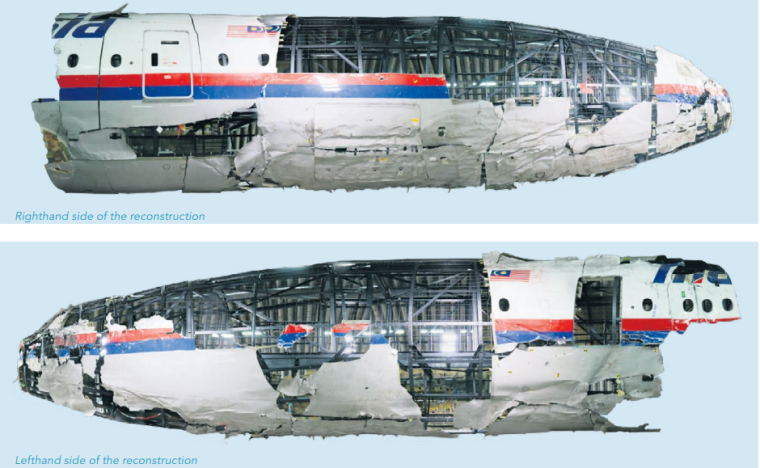Missile responsible for deaths of 298 in MH17 crash in Ukraine, report says

THE HAGUE, Netherlands (Christian Examiner) – A just-released report by the Dutch Safety Board confirms the detonation of a missile as the cause of the July 17, 2014, crash of Malaysia Airlines Flight 17 (MH17) into Ukraine, which caused the death of all 283 passengers and 15 crew. While the purpose of the report is not to cast blame, certain conclusions seem evident.
The report carries a heavy weight of hope from the families of the deceased, who have been left with more questions than answers in the 15 months since the crash.
Silene Fredriksz's son Bryce, 23, and his girlfriend Daisy, 20, were aboard MH17. Weeks after the crash, Fredriksz learned that Bryce's burned foot had been identified. Very few of the young couple's belongings have been recovered.
Fredriksz has struggled with frustrations at the lack of information so far. "I hope it [the report] tells the truth, because that's what we want to know: What happened? Who did it? Who is responsible? Why was Malaysia Airlines flying over a conflict zone?" she said in an interview with CNN.
"It won't bring them back, but we need to know the truth for ourselves, [and] for the children."
THE FINDINGS
"The crash of flight MH17 on 17 July 2014 was caused by the detonation of a 9N314M-type warhead launched from the eastern part of Ukraine using a Buk missile system," the Dutch Safety Board (DSB) report concludes.
The airplane departed from Kuala Lumpur International Airport, but never arrived at its destination in Amsterdam. It was targeted and shot down by a ground-to-air missile associated with the armed conflict between Russia and Ukraine on the eastern border of Ukraine.
The warheads are designed to explode in proximity to a vessel, even one flying at 33,000 feet, which is consistent with the aircraft reconstruction. These type of warheads are typically Russian, although Russia has continued to maintain a denial that it is at fault in the crash.
The report also reveals that the airspace over Ukraine was not safe for commercial vehicles. MH17 should not have been allowed to fly into the area where it was targeted.
"Moreover, it is clear that Ukraine already had sufficient reason to close the airspace over the eastern part of Ukraine as a precaution before 17 July 2014," DSB said. "None of the parties involved recognised the risk posed to overflying civil aircraft by the armed conflict in the eastern part of Ukraine."
The DSB report includes a transcript of the discussion between MH17 and air traffic controllers about permission to fly into Russian Federation airspace. The permissions were given shortly before air traffic control lost contact with the flight.
AT THE CRASH SITE
Michael Bociurkiw, a reporter covering Ukraine at the time of the MH17 crash, was one of the few granted first access to the crash site.
"Our first observations were of a gruesome scene of smoldering rubble, bodies (some still strapped into their seats), personal belongings and a bewildered group of swaggering rebels, uniformed first responders and foreign journalists," he wrote for CNN.
Using the tail with the Malaysian Airline logo still intact as a landmark, the journalists were appalled to see the horrific rubble of the flight.
"On the opposite side of a farm road that bisected the main impact site were more terrible scenes: mangled corpses amid still-smoldering fuselage, duty free shopping bags and open suitcases," Bociurkiw wrote.
He was also witness to the transportation of some of the passengers' remains by train to Netherlands.
"By far the most horrific scene was four days after the crash, when our team monitored the sealing up of train cars filled with the remains of the plane's passengers." He said the smell was "overwhelming," but knowing that the people were heading home "provided some sense of comfort."
Not everyone was comforted by the train, however. Fredriksz, who personally entreated Putin to take care of her son, was not reunited with Bryce and considers the crash site to be his grave.
"They were lying in a field there for days, and then the next point was a train and the train was moving and they were kept hostage, the bodies in the train," she remembers.
"His foot. Completely burnt. When you hear that, I can't describe how that feels."